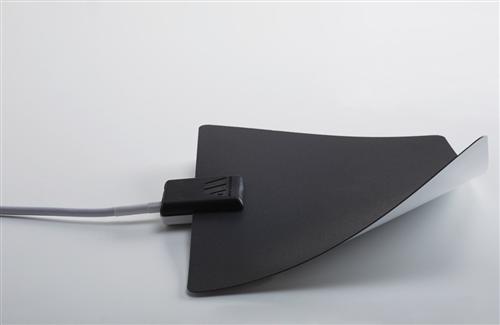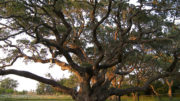So, most people will tell you that an amplified antenna just works better. At Solid Signal, we carry a lot of amplified antennas, and most of our customers are satisfied with them. They represent good value for the money, and there’s something about a small, powerful antenna that’s very appealing.
The typical amplified outdoor antenna is somewhere around 14×14 inches, although some are much bigger. Amplified antennas are great for people with homeowners associations or people who live in apartment buildings, because those people can’t put full-size antennas outside, even though they need to. In cases like that, an amplified antenna can be all they need.
The real question
So the question was put to me, if a medium-sized antenna with a medium-power amplifier can do as well as a large-sized antenna with no amplifier, can’t you just take a tiny antenna and add a massively powerful amplifier?
Oh if only.
Here’s why you can’t do that.
First of all, amplified antennas do work, but they don’t work the way they once did. In the old days of analog television, an antenna amplifier literally could help you get stations that couldn’t come in at all. Analog broadcasting is like that. Digital broadcasting isn’t. With a digital signal, your antenna can either pick out the signal from the surrounding noise or it can’t. So, an amplifier isn’t going to help get signals that you don’t otherwise get. Where it can help is when the signal is right on the edge, strong enough to be received by the antenna but not strong enough to make it down the cable. That can happen when the towers are over 50 miles away or when there are a lot of obstructions.
However, the antenna must be able to receive the signal in the first place. The way antennas work, the smaller they are, the less signal they receive. And, if they are smaller than about 12 inches, they tend not to receive very well at all, because of a whole lot of complex math having to do with the way UHF broadcasting works. It all has to do with the actual size of the waves the antenna is trying to receive. So that’s why all small antennas tend to be roughly the same size. Any smaller and there isn’t a whole lot of point to them.
I think it would be great if you could have a TV antenna the size of a button that worked as well as an 11-foot-long old-school yagi antenna. Technology is wonderful, but it’s not likely that we’ll ever see that. Of course cell phone antennas are quite small, but they’re a different story: cellular signals broadcast at a higher frequency than UHF television, and the higher the frequency, the smaller the antenna can be. And, of course cellular antennas only have to pull in a signal from a few miles away.
Get the right antenna from Solid Signal
Solid Signal is your source for every sort of antenna you can think of. Television antennas? Check. Satellite dish antennas? You bet. Cellular, base station, even CB? You got it. You won’t find a better, higher quality selection. In fact most people complain there are just too many to choose from! But, we tell them, getting the right one is easy. Just ask the experts. Call us during East Coast business hours. The number is 888-233-7563 and when you call you’ll get an expert who can help you. Prefer to do business over e-mail? No problem! Just fill out the form below and we’ll get back to you, usually within one business day.





